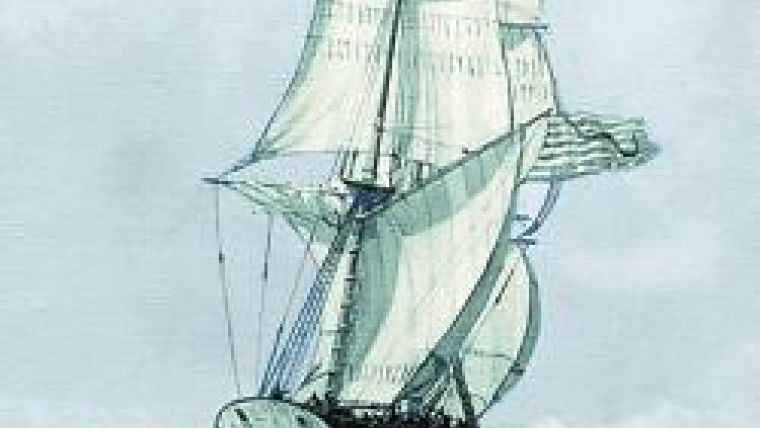Historic Hydrographic Shipwreck Discovery
Almost 200 years to the day after her sinking, a couple of Connecticut, USA, scuba divers revealed they had discovered the remains of what appears to be the USS Revenge. At the time of her demise the Revenge was performing important hydrographic survey work in the shallow waters of Long Island Sound. Shrouded in thick fog on that cold winter morning the schooner ran aground on a reef near Watch Hill, Rhode Island.
When the ship went down in January 1811 she was captained by Oliver Hazard Perry, who later become a celebrated war hero. Perry gained notoriety for his bravery during the Battle of Lake Erie in the War of 1812. Perry became famous for his proclamation, "we have met the enemy, and he is ours". He is also renowned for flying a flag emblazoned with the words, "don't give up the ship", which is a symbol still in use by the US Navy today.
Perry was court martialled for the sinking, but exonerated during trial when blame was fixed on the ship's pilot who had assured the captain he was quite familiar with local waters. Perry's reputation was tarnished by the incident, but later redeemed by the courage he demonstrated in the Lake Erie battle. When the ship he commanded was severely hit and taking on water, the captain jumped in a lifeboat with several surviving crew members, rowed to the nearby Niagra, and fought on to victory.
Recreational scuba diver Charles Buffum had always dreamed of finding a "shipwreck". When Charlie's mother gave him a book titled, "Shipwrecks on the Shores of Westerly", his dream moved one step closer to reality. While reading about maritime disasters in local waters, Charlie learned about the wreck of the USS Revenge. Fascinated by the story, he called his friend and diving partner Craig Harger and asked if he'd be interested in searching for a shipwreck. Harger jumped at the chance. The pair enlisted the help of another buddy, Mike Fournier to assist in the operation. Their first step was to acquire a metal detector. After picking up a JW Fishers Pulse 8X detector, the trio loaded their gear into Charlie's 20 foot boat and set off for Rhode Island. From the book's description of the grounding, they had a good idea where to begin their search. When the boat finally reached the Watch Hill reef, the guys suited up in record time. They hit the water with great anticipation and began the hunt. After two dives their enthusiasm began to ebb, like the heat from the bodies in the cold New England water. They decided to make one more dive before calling it a day. Sweeping the bottom with the Pulse 8X, they swam through the thick kelp surrounding the shallow reef. Suddenly the detector's audio began to wail. Craig's eyes bugged in his mask as he peered down at a small cannon lying on the ocean floor. In subsequent dives the team went on to find more cannon, a large anchor, and other metal objects.
The divers later determined the small cannon first discovered was a carronade, a type of cannon developed in the late 18th century. Lighter and shorter than a long gun, the carronade could be used on upper decks, and more could be mounted. This gun was well-suited to the broadside battles fought by sailing ships of the day. The lower muzzle velocity of the weapon's round shot was intended to create many deadly flying wood splinters when striking a vessel.
The men have contacted the Naval History and Heritage Command, the office that oversees the salvage of Navy ships. They hope to convince the Navy to salvage the remains, or relinquish the rights so they can raise the money needed to do it themselves. Their intent is to have the artefacts preserved and displayed at the historical society.

Value staying current with hydrography?
Stay on the map with our expertly curated newsletters.
We provide educational insights, industry updates, and inspiring stories from the world of hydrography to help you learn, grow, and navigate your field with confidence. Don't miss out - subscribe today and ensure you're always informed, educated, and inspired by the latest in hydrographic technology and research.
Choose your newsletter(s)
























